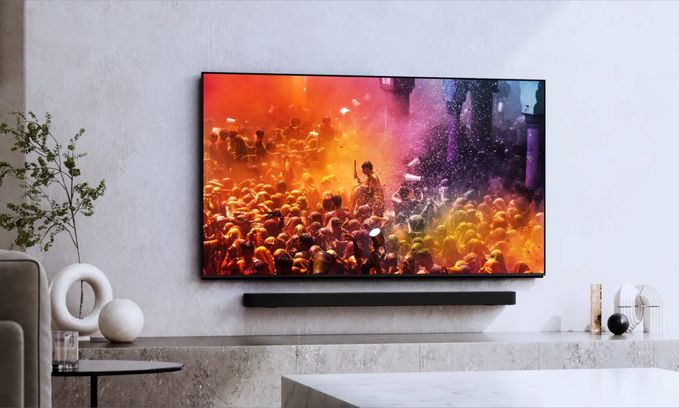This year Sony has unveiled the first flagship BRAVIA 9 QLED, which does not use an OLED panel. Perhaps the management of the Japanese giant highly appreciates the prospects of the new LED TVs with quantum dot (QD) technology and mini LED backlight.
In fairness, the company has long been using QD-based Triluminos technology, which has expanded the color gamut and increased color accuracy. But the LED-contrast remained significantly lower than that of OLED TVs, which provide ideal black color. As known, self-emitting diodes do not require backlight, the light from which partially passes through the filter, reducing the black depth. But replacing traditional LEDs with miniature ones in the mini LED backlight has radically increased the contrast.
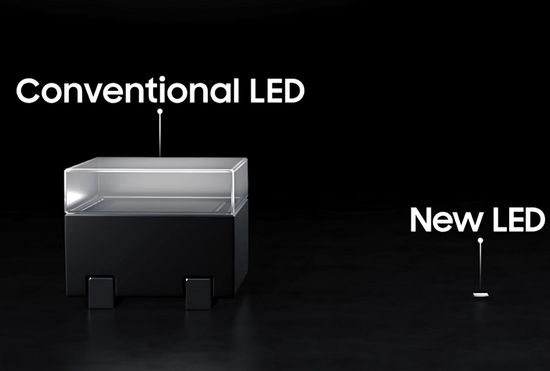
The reducing their size allowed developers to use a huge number of miniature LEDs. Depending on the panel size, they are grouped into hundreds or even thousands of local dimming zones with independent control. In turn, it provides very precise brightness control in different frame areas, depending on its content. As a result, over the past few years, the market has been filled with LED TVs with QD (high brightness and natural colorful colors) and mini LED backlight (superb contrast). Quite predictably, their image quality and, unfortunately, the price have increased to the level of OLED panels.
Sony BRAVIA 9 QLED continues the BRAVIA 7 and 8. According to the developer, it uses the improved smallest LED controllers, which further increase the contrast due to more precise control of local dimming zones.
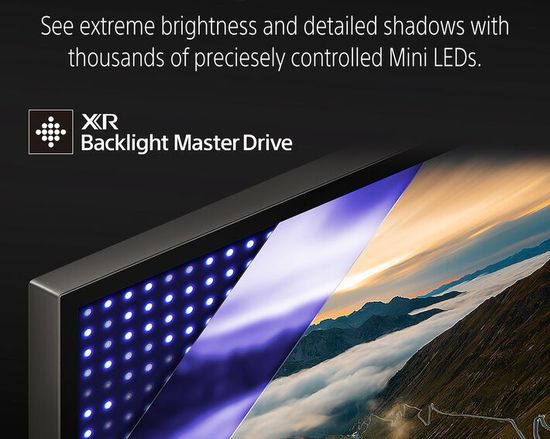
Of course, the flagship supports HDMI 2.1 bandwidth (up to 4K@120Hz), Dolby Vision, VRR, etc. The series uses the Google TV interface with pre-installed apps, supports voice control and has a built-in 70-watt 2.2.2-channel speaker system.
Sony BRAVIA 9
The model range includes 65″ (K-65XR90, ~$ 3,000), 75″ (K-75XR90, ~$ 3,500) and 85″ (K-85XR90, ~$ 4,800) TVs with 1512, 1920 and 2808 local dimming zones, respectively.
For comparison, the prices for 65″ flagships of the main competitors are:
– Samsung QN95D (QLED + mini LED) ~ £ 2,800 (~ $ 3,570);
– Sony A95L (hybrid QD-OLED panel, 2023) ~ $ 3,400;
– LG OLED Evo G4 ~ $ 2,800;
– Samsung S95D (hybrid QD-OLED panel) ~ $ 2,700;
– TCL QM851G and Hisense U8N ~ 1,500 and $ 1,300.
Build quality is traditionally impeccable. The TVs use two metal feet which are adjustable in height (1.34″ or 3.74″) and distance between them (18.82″ or 55.83″).
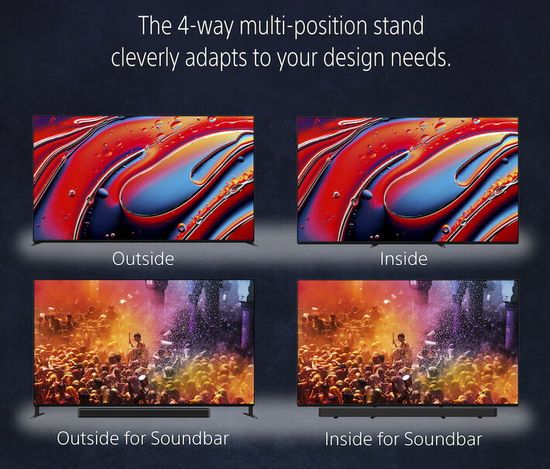
Of course, it can also be mounted with VESA 300 x 300 wall mount. Its borders and max thickness are 0.28″ (0.7 cm) and 1.85″ (4.7 cm).
The port list contains 4x HDMI, including ARC/eARC to stream audio to soundbar, 2x HDMI 2.1 with 4K@120Hz support and 2x HDMI 2.0. To be fair, flagship Samsung and LG TVs have 4x HDMI 2.1, which can be useful for gaming.
BRAVIA 9 offers some picture modes. Professional mode was developed for Sony’s BVM-HX3110 30.5″ 4K Trimaster HX Professional Master Monitor, which costs over $ 30,000. It displays HDR content beautifully, but is dim for SDR content. The Cinema (Filmmaker analogue) and Standard modes are much brighter, but provide less deep blacks.
Like all Sony TVs, Bravia uses Google TV.
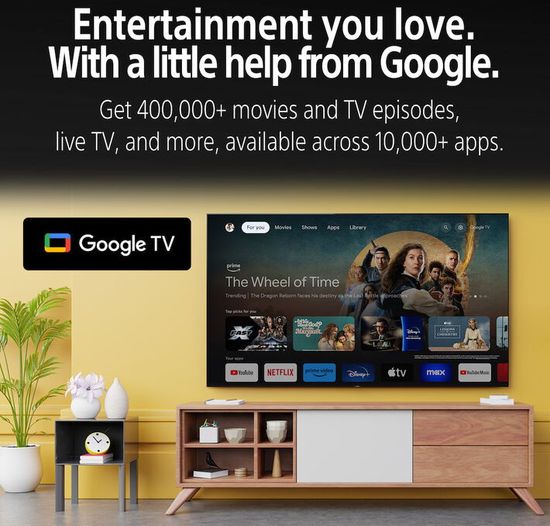
Of course, the 9 Series comes with the Sony Pictures Core app for streaming 4K content from Sony Pictures Entertainment.
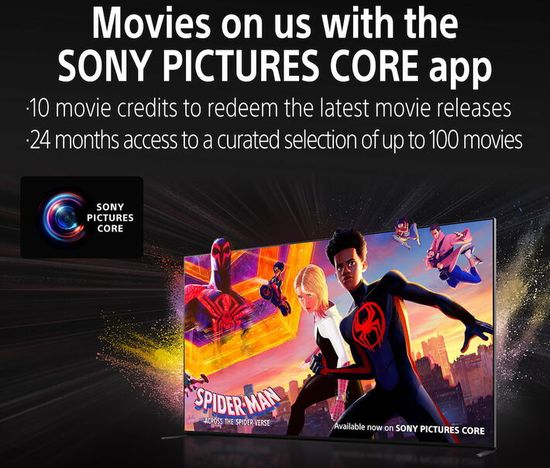
Tests
Contrast – 4,137 : 1 native contrast and ~ 390,000 : 1 with local dimming on ‘High’ setting.
In fact, the model provides ‘infinite’ OLED contrast. Its Full-Array backlight uses local dimming with 1,512 dimming zones in 65-inches model. Moreover, black depth in the Game Mode is similar.
The blooming is absent even around small bright objects on a black background, but does appear when watching from an angle.
HDR / Game Mode / SDR brightness:
– peak 10% window ~ 2,870 / 2,920 / 2,520 nits (cd/m²);
-“- 50% ~ 1,270 / 1,270 / 1,240 nits;
-“- 100% ~ 750 / 750 / 775 nits.
PQ EOTF tracking works flawlessly. As known, the PQ EOTF (Perceptual Quantizer Electro-Optical Transfer Function) target characterizes HDR brightness at different stimulus levels. Simply put, it provides optimal brightness for different content.
Color Gamut (DCI P3 / BT.2020):
– DCI P3 ~ 95% / 80%.
For comparison:
– Samsung S95D (QD-OLED) ~ 100% / 90%;
– LG G4 OLED ~ 97% / 70%;
– Hisense U8N (QLED) ~ 96% / 82%.
Color Volume ~ 88% / 55% for 1,000 cd/m² DCI P3 / 10,000 cd/m² BT.2020.
This value characterizes the proportion of colors displayed by the TV from their total number within the P3 gamut (brightness range from 0 to 1,000 cd/m²) or BT.2020 (up to 10,000 cd/m²). In fact, it illustrates the dependence of the display’s color reproduction on the brightness level. This is very important when displaying saturated and bright colors of HDR content.
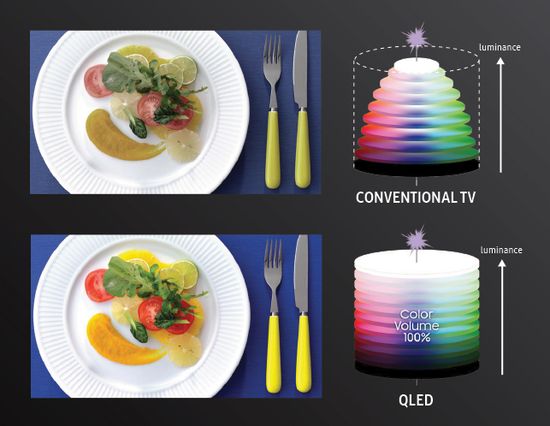
Pre / Post calibration
– White Balance dE ~ 2.3 / 0.2 (good value < 3);
– Color dE (color accuracy) ~ 1.3 / 1.2 (good value < 3);
– Gamma ~ 2.14 / 2.2 (2.1-2.3);
– Color Temp ~ 6,490K / 6,500K (6,500K).
Audio & Gaming & Smart features
Unlike Sony’s OLED TVs with Acoustic Surface Audio+ (transforms the screen into a speaker), the Bravia 9 uses a more traditional 2.2ch 70W audio system. Of course, it supports the Dolby Atmos and DTS:X formats. In addition to two frame tweeters, the model uses an additional new beam tweeter that directs the sound upward.
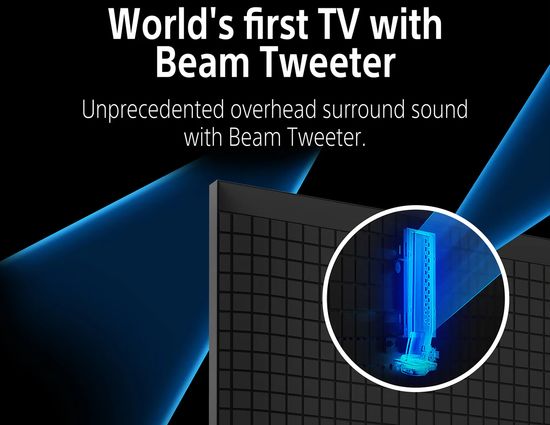
It tracks the sound source displacement in the frame. In fact, it’s the equivalent of the popular Object Tracking Sound Pro (OTS Pro) in Samsung TVs.
Of course, the model supports all the latest popular gaming options, including 4K@120Hz with HDMI 2.1, Variable Refresh Rate (VRR), and Auto Low-Latency Mode (ALLM). Additional features include a black equalizer (changes only the gamma of black and gray shades), an on-screen crosshairs, Multi View and reducing motion blur via the pop-up game bar. In addition, it also supports Dolby Vision for Gaming.

The Bravia 9 is the first Sony TV with support of game screen size adjustment ‘out of the box’.
Like all Sony TVs, Bravia 9 is included in the Perfect for PlayStation 5 program, which offers:
– Auto HDR Tone Mapping optimizes PS5 graphics settings during setup;
– Auto Genre Picture Mode switches between the Game and Standard picture modes.
Input Lag is great, but slightly inferior to competitors:
– 17 (Sony Bravia 9) vs 13 (Hisense U8N and LG G4) vs 9 ms (Samsung S95D).
Traditionally for the brand, Bravia 9 uses Google TV, which is growing in popularity. Google Chromecast or Apple AirPlay 2 support streaming from other devices. In addition, Bravia 9 has an ATSC 3.0 tuner for picking up over-the-air 4K broadcasts. Google Assistant and Apple Home Kit provide connection to the smart home ecosystem.
Conclusion
Pros
– superb contrast with very deep black;
– very high HDR brightness;
– perfect pre-calibration ‘out of the box’;
– great reflection handling;
– full compatibility with consoles (Xbox Series, PS5, etc);
– new gaming features;
– Google TV;
– Google Chromecast and Apple AirPlay 2 (streaming), ATSC 3.0 tuner (4K broadcasts), Google Assistant and Apple Home Kit (smart home connection);
– Beam Tweeter (tracking sound location in frame).
Cons
– mediocre viewing angle;
– only two HDMI 2.1 ports.
Today, the Sony Bravia 9 outperforms most flagships, including LG OLED Evo G4 and the cheaper TCL QM851G and Hisense U8N. But the specs of last year’s Sony A95L with hybrid QD-OLED panel, the new Samsung QN95D (QLED + mini LED) and Samsung S95D (hybrid QD-OLED panel) are almost identical.
However, the specs of modern flagships are redundant. For example, SDR content requires only a few hundred nits. Of course, HDR is more demanding, but usually the difference ceases to be visualized after 800 nits. Unfortunately, satellite and cable broadcasting only offer SDR format due to limited networks bandwidth. Accordingly, HDR content is available only on Blu-ray discs or in Netflix subscriptions.
The difference between the dynamic contrast of 40,000:1 vs 140,000:1 in models with mini LED backlight – based local dimming is also not perceived.
Of course, the processing algorithms and used technologies differ among brands. However, their level is also approximately equally high among all industry leaders. Therefore, considering the higher price, Sony Bravia 9 is ideal for perfectionists with a good budget.
This video shows the Sony BRAVIA 9.
